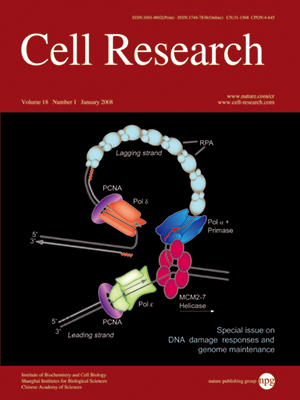
Volume 18, No 1, Jan 2008
ISSN: 1001-0602
EISSN: 1748-7838 2018
impact factor 17.848*
(Clarivate Analytics, 2019)
Volume 18 Issue 1, January 2008: 148-161
REVIEWS
The fidelity of DNA synthesis by eukaryotic replicative and translesion synthesis polymerases
Scott D McCulloch1 and Thomas A Kunkel2
1Department of Environmental and Molecular Toxicology, North Carolina State University, Campus Box 7633, Raleigh, NC 27695, USA
2Laboratory of Molecular Genetics and Laboratory of Structural Biology, P.O. Box 12233, E3-01, National Institute of Environmental Health Sciences, Research Triangle Park, NC 27709, USA
Correspondence: Scott D McCulloch(scott_mcculloch@ncsu.edu )
In their seminal publication describing the structure of the DNA double helix
1, Watson and Crick wrote what may be one of the greatest understatements in the scientific literature, namely that "It has not escaped our notice that the specific pairing we have postulated immediately suggests a possible copying mechanism for the genetic material." Half a century later, we more fully appreciate what a huge challenge it is to replicate six billion nucleotides with the accuracy needed to stably maintain the human genome over many generations. This challenge is perhaps greater than was realized 50 years ago, because subsequent studies have revealed that the genome can be destabilized not only by environmental stresses that generate a large number and variety of potentially cytotoxic and mutagenic lesions in DNA but also by various sequence motifs of normal DNA that present challenges to replication. Towards a better understanding of the many determinants of genome stability, this chapter reviews the fidelity with which undamaged and damaged DNA is copied, with a focus on the eukaryotic B- and Y-family DNA polymerases, and considers how this fidelity is achieved.
Cell Research (2008) 18:148-161. doi: 10.1038/cr.2008.4; published online 1 January 2008
FULL TEXT | PDF
Browse 1680


